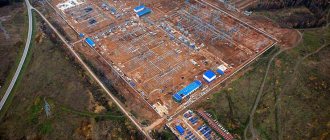When accounting for fixed assets, it is necessary to distinguish between the concepts of modernization, reconstruction and repair - this will determine whether the book value of the object will increase or the costs will be written off as expenses. Let's clarify the correspondence of accounts and consider in detail the registration of modernization of fixed assets in "1C: Accounting of a government institution 8", ed. 1.0.
- What is the difference between modernization, reconstruction, repair
- What documents are needed to formalize modernization, reconstruction or repairs in a government agency?
- Accounting for restoration of fixed assets
- We reflect modernization operations in 1C
Differences between the concepts of modernization, reconstruction, repair
During the operation of fixed assets, organizations have to bear costs to ensure their functioning. The method of reflecting these costs in accounting depends on the nature of the work performed: modernization, reconstruction or repair.
Modernization and reconstruction is the reorganization of a fixed asset object. The main goal of modernization is to improve the fixed assets object, which leads to an increase in the technical level and economic characteristics of the object (paragraph 2, paragraph 2, article 257 of the Tax Code of the Russian Federation). As a result of modernization, its quality characteristics are improved (for example, service life increases, power increases, technical capabilities expand, etc.). Reconstruction leads to an improvement in the quality of products (works, services), a change in their nomenclature, as well as an increase in production capacity (clause 14, 14.1 of article 1 of the Town Planning Code of the Russian Federation, paragraph 3 of clause 2 of article 257 of the Tax Code of the Russian Federation).
Repair is a procedure for changing, updating or improving individual parts or an object as a whole, as well as restoring the original characteristics of the object. During repairs, the technical and economic indicators do not improve, but remain the same, but the faults that have arisen are eliminated and worn parts are replaced, in the presence of which it is impossible to operate the main asset.
The costs of modernization and reconstruction increase the book value of the asset, and the costs of repairs must be written off as expenses.
For example, in April of the reporting year, an institution purchased a computer, the initial cost of which was 27,000 rubles. In the same month, the facility was put into operation and modernized. A DVD drive was installed, which improved the technical characteristics of the computer. The work was carried out by a third party company. The cost of the work (including the cost of new parts) was 5,000 rubles. (excluding VAT). Based on the results of modernization, the book value of the fixed asset item amounted to 32,000 rubles.
In the accounting of an institution, repair costs can be written off in the following ways:
- as expenses arise, they are included in the cost of products (works, services), or immediately charged to expenses.
- at the expense of the formed reserve for the repair of fixed assets.
Whether restoration work constitutes repair or modernization (reconstruction) of an asset is sometimes difficult to determine. The type of work on the restoration of buildings and structures - repair, reconstruction or modernization - is determined by the following regulatory documents:
- Regulations on carrying out scheduled preventative repairs of industrial buildings and structures MDS 13-14.2000, approved by Decree of the USSR State Construction Committee dated December 29, 1973 No. 279;
- Departmental construction standards (VSN) No. 58-88 (R), approved by order of the State Committee for Architecture under the USSR State Construction Committee dated November 23, 1988 No. 312;
- Letter of the USSR Ministry of Finance dated 05/29/1984 No. 80 (as amended on 02/11/1986) “On the definition of the concepts of new construction, expansion, reconstruction and technical re-equipment of existing enterprises.”
Basic Concepts
Construction is the process of erecting, renovating, repairing, and restoring structures for various purposes. During its implementation, professional knowledge is used, as well as modern technology. Construction work additionally covers the design of future facilities, the search for funds, and site preparation.
No modern construction can be completed without the preliminary creation of a project for the future facility Source baden.kg
Reconstruction is a designed change in the size of an already finished structure, including its specific geometric characteristics (height of walls, number of floors), utilities (laying a sewer system, updating electrical wiring). All activities are carried out according to a pre-approved detailed plan.
Reconstruction of any objects is carried out according to a pre-created and approved plan Source copo.ru
Documenting
It is recommended that the need for repair work be documented. If an organization is repairing operating systems that are already in use, then it is possible to draw up a report on the identified defects of the fixed asset (defect sheet). Repairs of new equipment, the malfunction of which was identified before being registered as a fixed asset, must also be documented.
Order of the Ministry of Finance of the Russian Federation dated March 30, 2015 No. 52n does not provide for the form of the primary document for these purposes. But you can draw up a report on identified equipment defects in form No. OS-16 (OKUD 0306008). Its use must be fixed in the accounting policy, because now the forms of documents of class 03 according to OKUD are not mandatory.
For some industries, unified departmental forms of supporting documents are provided. For example, in order to document identified defects in lifting and transport equipment of sea trade ports, they use a defect sheet approved by Resolution of the Ministry of Transport of the Russian Federation dated January 09, 2004 No. 2.
When transferring an asset for repair to a special department of the institution (for example, a repair service), you should draw up an invoice for internal movement (form 0504102) in triplicate. If the location of the asset does not change during repairs, there is no need to prepare an invoice. This procedure follows from the Methodological Instructions approved by Order of the Ministry of Finance of the Russian Federation dated March 30, 2015 No. 52n.
If an organization does not carry out repair work on its own, it is required to conclude a contract with the contractors (Article 702 of the Civil Code of the Russian Federation).
When transferring a fixed asset to a contractor for long-term repairs, you need to draw up an act of acceptance and transfer of the fixed asset. In general, the Methodological Instructions approved by Order of the Ministry of Finance of the Russian Federation dated March 30, 2015 No. 52n, say that when transferring an object of fixed assets, it is necessary to draw up an acceptance certificate in form No. 0504103. But if you pay attention to the details of the act itself (f.0504103), you can see that it will not be possible to fill it out during transfer. Since the beginning of the act contains the following text:
“The commission, appointed by order (instruction) dated “_” ____ 20_, inspected the repaired, reconstructed, modernized fixed assets and established the following:..”
Consequently, subsequent sections of the deed are completed after the contractor has already delivered the repaired property. Therefore, when you are just handing over an object for repairs, you can draw up an act in any form.
In the event of damage (loss) of a fixed asset item, the signed act will allow the institution to demand compensation from the contractor for damages caused (Articles 714 and 15 of the Civil Code of the Russian Federation). If there is no such act, then it will be difficult to prove the transfer of this fixed asset to the contractor.
After signing the act (f.0504103), the head of the institution approves it, then the act is transferred to the accounting department. Based on the received report, the accountant needs to reflect information about the repairs performed in the fixed asset inventory card according to form No. 0504031 (No. 0504032). There is no need to make accounting entries for changes in the value of an object.
It is recommended to formalize the decision on the reconstruction of fixed assets by order of the head of the institution, which must indicate:
- reasons for reconstruction;
- timing of its implementation;
- persons responsible for the reconstruction.
Plan, stages of reconstruction work
Reconstruction of buildings of different functionality involves changing the external appearance of the object and erecting capital superstructures. During its implementation, the structure of buildings and supporting structures is changed, and attention is paid to the improvement of the nearby area.
As a rule, reconstruction is carried out comprehensively; first of all, the foundation is repaired and strengthened. In addition, buildings and basements are waterproofed, roofs are replaced, and facades are repaired. The presented list can be supplemented with interior decorative decoration of rooms and the addition of an attic.
Reconstruction of the facade of a building requires a careful approach and high professionalism of workers Source mastera-fasada.ru
Experts distinguish the following types of reconstructions:
- Increasing the area of different rooms.
- Reconstruction of an industrial building into residential apartments and offices.
- Expansion of the enterprise due to the construction of an auxiliary ceiling in the building.
In general terms, as a result of the planned reconstruction work, additional space is provided for the creation of new workshops, the location of equipment, apartments, and the arrangement of workplaces.
According to the rules, a plan for future reconstruction must contain detailed information regarding all construction and installation work, including the design of changes that are planned to be carried out in the engineering systems of the building. Only specialists competent in this matter are allowed to draw up such a document.
The reconstruction of buildings is carried out in stages. The individual stages completely coincide with the stages of the above-mentioned new construction.
At the initial stages of reconstruction of the facility, a project is developed, which indicates all the calculations and necessary information about the upcoming scope of work. Source edilvelgi.com
Sequencing:
- Preparation. There is an acquaintance with the task at hand, as well as the wishes of the customer. Particular attention is paid to the object itself. Employees study its design documentation, layout, and application features. Then the client provides a detailed technical specification, indicating the required results. After studying the information received, a plan for future work is drawn up.
- Study. The relief, soil, depth of groundwater, as well as the current state of structures (underground, above-ground), and their ability to withstand additional loads are carefully examined. It is important to describe and photograph all existing damage. If necessary, tests are done in the laboratory. As a result of the research work, a detailed report is drawn up, which is supplemented by calculations and expert opinions.
- Design. Based on the technical specifications and collected information, a project is drawn up. As a rule, it contains the main parameters of the new design, all changes made, and drawings. In addition, an estimate of the work is indicated (list of operations, approximate cost).
- Implementation. To carry out high-quality reconstruction, it is important to carry out all construction and installation work in accordance with a previously created project.
Attention! If planned reconstruction work is carried out on the territory of an operating enterprise, the main functioning of the latter must not be interrupted. In this case, the company management coordinates with the performing company the procedure and duration of the work.
Based on the customer’s technical specifications and the information collected during the research, a project for the reconstruction of the facility is drawn up. Source absolute-project.ru
Accounting for OS restoration work
Costs for the reconstruction of fixed assets are accounted for in account 106.01 “Investments in fixed assets” (clause 130 of the Instructions to the Unified Chart of Accounts No. 157n).
We present the main correspondence that must be reflected in the accounting in the table.
Table “Correspondence of invoices for asset reconstruction operations”
| Dt | CT | Contents of operation |
| 0.106.ХХ.310 | 0.105.ХХ.440 | expenses for reconstruction are taken into account in the amount of material reserves written off for the work |
| 0.106.ХХ.310 | 0.302..730 0.302.26.730 | the costs of reconstruction of fixed assets carried out by contract are taken into account |
| 0.101.11.310 | 0.106.11.310 | the initial cost of the fixed asset was increased by the total amount of reconstruction costs. |
This procedure is established by the Instructions to the Unified Chart of Accounts No. 157n (accounts 101.00, 106.01, 302.00).
The costs of repairs, including capital ones, with the involvement of a third-party organization are reflected in accounting by the entries shown in Table 2.
Table 2. Correspondence of invoices for OS repair operations
| Dt | CT | Contents of operation |
| 0.401.20.225 | 0.302.25.730 | Remuneration accrued to the contractor for repairs |
| 0.302.25.830 | 0.201.11.610 Off-balance sheet account 18 | Payment transferred to the performer |
What is the difference between new construction and reconstruction?
Having become familiar with the basic concepts and types of construction and reconstruction work, we can highlight the following comparative points:
- Principles. During construction, the required object is built anew, so the project for it is created independently. During the reconstruction period, the features of the structure used, its elements, and communications are certainly taken into account.
- Volume. According to the definition, modern construction is considered a broader concept, since it includes any reconstruction.
- Result. Any construction work ends with the commissioning of the constructed facility, and reconstruction work is carried out at the existing enterprise.
The difference between reconstruction and new construction is significant. Such concepts should not be confused, since their mutual substitution can create many problems.
The difference between restoration and reconstruction
Restoration work can cover the entire building or a separate part of it. For example, sometimes only the facade is restored, in other cases - the foundation and load-bearing structures of the building. Updating the latter is extremely labor-intensive and expensive work. It often requires a comprehensive approach, and high-quality results are achieved through the coordinated interaction of multidisciplinary professionals.
Reconstruction is a more extensive undertaking. Its cost is influenced by a whole range of circumstances: the volume of future work, the dimensions of the building, as well as its technical condition. After completion of such a process, the structure changes radically, including its main functional purpose. The latter is considered the primary difference between reconstruction and restoration activities.
After restoration is completed, not only the appearance of the building may change, but also its main functional purpose Source cdn.tvc.ru
Payment difference
Reconstruction:
Issues of development and reconstruction of housing with the attraction of appropriate funding are dealt with by local government bodies. Legislative acts allow authorities to initiate new investment funds to accumulate funds from various sources.
Major renovation:
Are there standards for the difference between major repairs and reconstruction? Yes, they are regulated by relevant developed standards. If the collected funds from the residents are not enough, then the building falls under regional jurisdiction, and financial expenses in the municipal housing fund are borne by the local government (the regional capital repair fund is described here).
In a private housing stock, costs are borne by apartment owners based on the minimum contribution they collect. Considering all of the above, you need to choose whether reconstruction or major repairs will be carried out in your home.
Read about paying for major repairs here.
What work is carried out in each case?
Reconstruction:
Global procedure, redevelopment of the facility. The area, volume, number of floors and height of the building may change. The restoration or replacement of load-bearing building structures, reconstruction, expansion, and addition of the building are carried out.
Major renovation:
- repair of the building's internal supply systems;
- repair of faulty elevators, including their replacement; elevator shafts;
- roof repair;
- basement renovation;
- facade repair;
- foundation repair.
Note: Housing Code of the Russian Federation, Ch. 15, Art. 166.
You will find a list of work on capital repairs of apartment and multi-storey buildings here, we talked about the formation of a capital repair fund here, whether you need to pay a contribution for major repairs in the receipt, whether it is legal, is described in this material.
Having studied these legislative acts and using the information from our article, you can easily understand what the difference is between reconstruction and major repairs.
The list of repairs in some cases is expanded by a special Act of the constituent entity of the Russian Federation:
- façade insulation;
- creation of a ventilated roof;
- arrangement of roof exits;
- installation of utility metering devices and resource control units.
Now that it has become clear what the differences are between major repairs and reconstruction, let’s consider the timing of the work and other details.
What is a major overhaul?
Major repairs are complex works aimed at eliminating the wear and tear of residential buildings. They change equipment, working elements, any components, excluding load-bearing ones.
Major repairs of linear objects are significant changes to building elements that do not involve changes in the type of structure. Such objects include pipelines, roads, bridges.
The tasks of a major overhaul may include repairing broken or partially destroyed parts. For example, pipes in houses can be replaced, walls can be plastered, the lighting system can be changed, the roof can be replaced, and much more.
There are two types of major renovations. Comprehensive - with the replacement of engineering and its improvement, selective - with incomplete replacement of equipment, when repairs are carried out regularly in parts.
Redevelopment is done only when the layout of the structure changes. Technical re-equipment is carried out only when replacing old equipment with the latest technologies.
+
WHAT APPLIES TO CAPITAL INVESTMENTS ACCORDING TO FSB 26/2020
FSBU 26/2020 “Capital Investments” establishes requirements for the formation in accounting of information on capital investments of organizations.
It should be noted that the standard dedicated to accounting for capital investments was adopted for the first time. It does not cancel the Regulation on Accounting for Long-Term Investments dated December 30, 1993 No. 160 (hereinafter referred to as Regulation No. 160), which can be applied to the extent that does not contradict the standard.
Capital investments are understood as the organization's expenses for the acquisition, creation, improvement and (or) restoration of fixed assets. Capital investments include, in particular, costs for:
- acquisition of property intended for use directly as fixed assets or parts thereof, or for use in the process of acquisition, creation, improvement and (or) restoration of fixed assets;
- construction, construction, production of fixed assets;
- radical improvement of land;
- preparation of design, working and organizational-technological documentation (architectural projects, construction permits, etc.);
- organization of a construction site;
- implementation of designer's supervision;
- improvement and (or) restoration of fixed assets (for example, completion , retrofitting , modernization , reconstruction , replacement of parts , technical inspections , maintenance );
- delivery and bringing the object into a condition and location in which it is suitable for use for the intended purposes, including its installation, installation;
- carrying out commissioning and testing.
Capital investments are recognized in accounting if the following conditions are simultaneously met:
- the costs incurred will ensure that the organization receives future economic benefits (the non-profit organization achieves the goals for which it was created) for a period of more than 12 months or a normal operating cycle of more than 12 months;
- the amount of costs incurred or an amount equivalent to it is determined.
Information message of the Ministry of Finance of Russia dated November 3, 2020 No. IS-accounting-28 “New in accounting legislation: facts and comments” contains some comments on the application of legislative innovations.





